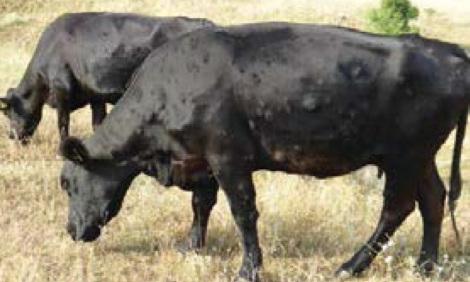



Is it Time to Re-think Weaning?
With massive impacts on cow stress and calf impacts further down the line, it is important to get weaning right, says Joe Stookey, researcher and professor of animal behavior at the University of Saskatchewan.Getting Ahead of the Issue now is Critical - It's also a Leadership Opportunity

It's a potentially sensitive, highly charged emotional topic that could become both a lightning rod and the next big discussion in livestock welfare. The good news is, it's also an area where new knowledge and options are emerging.
For Joe Stookey, perhaps most important is that it represents a powerful opportunity for industry-driven innovation and leadership.
The topic is livestock weaning.
"It's a huge issue," says Stookey, a researcher and professor of animal behavior at the University of Saskatchewan. "The impact it has down the line in our production systems is tremendous. The impact it can have in how our livestock industries are viewed by the public is tremendous. I see it as the most significant welfare concern that so far has flown largely under the radar."
Opportunity to Improve Welfare, Productivity
Stookey knows well both the issue and the challenges involved at the production level. Weaning is a major focus of his research and he has worked closely in particular with the beef industry. His work has involved investigating ways to better understand the impact and importance of weaning from a welfare perspective and ways to improve weaning approaches.
He doesn't point fingers or assign blame. He sees the economic and practical hurdles involved. He does, however, think it's high time for livestock industries as a whole to look at weaning with fresh eyes and drive toward more welfare-friendly, sustainable solutions. While his focus has been on the beef industry, he says the issue resonates and needs attention across sectors.
"Are the consumers screaming about it? No. They don't know anything about it. But that can change quickly, and are we prepared for that? Weaning touches on feelings that are universal - the whole mother to child relationship. It has the potential to become a major issue."
Case Study: The Cow-calf Dynamic
The latest knowledge about the cow-calf relationship, where Stookey has focused, reveals clear weaknesses to typical weaning approaches, along with new opportunities to do it better.
"We know weaning stress is huge," he says. "If you asked the cow to vote or the calf to vote, they would say the biggest stressor in my life is weaning. When you measure indicators such as vocalizations or reduced feed intake, the impact is far beyond other stressors such as castration or dehorning. You can see the stress five days later. And there's no doubt it contributes to more sick animals and less productive animals. It's a welfare issue and also a productivity issue."
Most important, this is something the industry can change, he says. "Not only can we do better, we need to do better."
Innovative Approaches
Stookey and other researchers have examined options such as pre-conditioning calves. They have found this can dramatically reduce weaning stress. One example involves "two-stage weaning" using anti-sucking nose paddles.
Calves gets a plastic anti-sucking nose paddle a week before cows and calves are separated. "They can't nurse, but you allow the cows and calves to stay together," says Stookey. "The calves are fine with being denied the milk. You've shut the milk off by using the nose paddle, but at least mom is still there. Mammals are sort of pre-programmed to know someday the nursing is going to end, and that's okay. But taking milk and mother away simultaneously is stressful."

With this approach, the key is that weaning occurs in the presence of the mother, says Stookey. "Five days later you can separate cow and calf and you don't see the signs of major stress that you would otherwise. We've eased them through the process and they do much better."
Calves perform better the first week, he says. They gain weight better and they eat more. "We need more work to identify the real economic advantages of this weaning procedure. We also need to better understand the potential health advantages. But based on the behavioural response of the calves, we know clearly this approach reduces a lot of stress."
There are, of course, implications to any production changes. Using nose paddles, for example, may require extra handling and cost. For Stookey, the key is to have a progressive mindset and find ways to make a good fit for this type of improvement. The overall benefits, he believes, can substantially outweigh the inherent challenges of change.
Taking Charge
The bottom line is, innovative approaches like this one need further research and support across industries, he says. The work to get there needs to be shared among different parts of the supply chain. System changes also need to be considered - for example, many calves are shipped to feedlots on the same day they are weaned.
"We know when there are multiple stressors on animals it has a very negative effect. Too often we are throwing multiple stressors at them at one time. If we wean calves, transport them, change location and change diets all on the same day, it should not be a surprise if calves get sick or struggle to start on feed."
The time has come to push forward with new weaning approaches. "We've got to be smarter and use the science that is available," says Stookey. "We know we can do this better and now is the time to really take charge."
For more featured articles from Meristem please click here
March 2013


